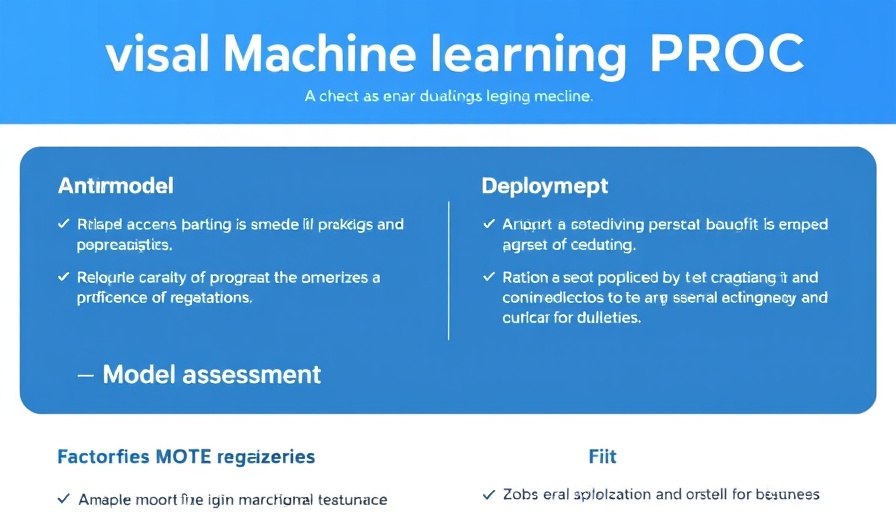
The Power of SAS Procedures in AI
In the constantly evolving field of AI and data analytics, SAS Procedures (PROCs) stand as indispensable tools that enable users to harness complex algorithms for various analyses. By abstracting intricate tasks into simple commands, SAS enables even novice data analysts to delve deep into machine learning and AI without needing a PhD in statistics. Whether you are interested in descriptive statistics, regression modeling, or advanced machine learning, understanding SAS Procedures can significantly enhance your AI learning path.
What Are SAS Procedures?
SAS Procedures are predefined routines meant to execute specific tasks on data sets. They simplify everything from performing basic statistics to deploying sophisticated machine learning models. Beginning with the keyword PROC, these commands can automate complex tasks like fitting, scoring, and validating models, thereby providing consistency and reproducibility across analyses.
Why SAS Procedures Matter in AI
One of the compelling reasons to integrate SAS Procedures into your analytical workflow is their ability to simplify operations, allowing users to shift their focus from technical details to gathering meaningful insights. They also interface well with SAS’s data step and macro language, making them versatile across various domains—including econometrics, forecasting, machine learning, and even text analytics. As AI increasingly permeates various sectors, facilitating faster and more reliable results is more important than ever, and SAS Procedures deliver on that promise.
Navigating SAS Viya 4 with the New Cheat Sheet
The recently launched SAS Procedure Cheat Sheet is an essential resource tailored for users of SAS Viya 4, especially those utilizing SAS Studio. This easy-reference guide spans numerous procedures across SAS’s advanced analytics portfolio—offering quick insights into what each PROC does, whether you are working on econometric simulations or deploying machine-learning models.
Highlights from the SAS Procedure Cheat Sheet
Understanding the practical applications of these procedures can empower users on their AI learning journey. Consider the following highlights:
-
Econometrics & Causal Inference: Procedures like
PROC CAUSALDISCOVERYidentify causal relationships in observational data, providing deeper insights that inform AI-driven decision-making. - Time-Series & Forecasting: PROC TSMODEL allows researchers to analyze and forecast time series data effectively, crucial for industries reliant on predictive analytics.
- Machine Learning & Model Deployment: PROC GRADBOOST is a fantastic tool for implementing gradient boosting machines, enhancing model performance—crucial for AI applications.
Future Predictions: The Role of SAS Procedures in AI Evolution
As AI continues to advance, SAS Procedures will likely evolve, offering new functionalities and integrations that accommodate the shifting landscape. Given the increasing demand for AI skills, understanding how to leverage these procedures can establish a competitive edge in fields such as marketing analytics, finance, and healthcare.
Counterarguments: Limitations of SAS Procedures
While SAS Procedures offer many advantages, they are not without limitations. For instance, users not familiar with programming might find the syntax challenging initially. Additionally, as open-source alternatives grow in popularity, SAS must continuously adapt its offerings to remain competitive.
Making Informed Decisions with SAS Procedures
Understanding SAS Procedures is not merely academic; it provides actionable insights that can shape the direction of an entire business strategy. With robust analytical capabilities, companies can make informed decisions based on solid data—all while saving time and resources.
Conclusion: Leverage SAS Procedures for Your AI Learning Path
In conclusion, as AI technology becomes ingrained in various sectors, mastering SAS Procedures can enhance your analytical capabilities dramatically. Dive into this realm equipped with the SAS Procedure Cheat Sheet and explore the tools that will empower your journey into AI analytics.
 Add Row
Add Row  Add
Add 




Write A Comment